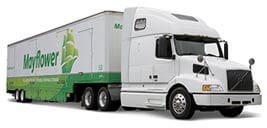METCALF MOVING BLOG
5 Tips for Relocating the Stuff in Your Basement When You Move
Moving the things in your basement is a special kind of complication. You might have no idea what’s down there and in what condition.
Of course, you can get rid of a lot of it. But there are probably lots of things down there that you need.
The good news is that it doesn’t have to be a nightmare. Follow these five tips to simplify your household moving process.
1. Start Packing the Basement First
If your basement is full of stuff, it’s too easy to save it for last. You may regret that especially in the last week before moving day.
If you haven’t had the time to declutter your basement in a few years — you’ll want to start with that task.
Go through a quick sort. Anything with severe damage can go. Things you forgot you had can probably land in the donate pile, too.
2. Watch for Water Damage
Since they’re underground, basements are likely to have some type of water damage. If you don’t spend a lot of time in your basement, you might not notice it.
There are a few signs of water damage you should know before you start packing. Cracks in the concrete, peeling paint, and mold are all indicators that you should dig into that area.
It’s not just your belongings that you’re worried about. Water damage might require extensive repairs. You’ll want to get a head start on it if you need to.
3. Avoid Transporting Pests
Insects and rodents love to hide out in the basement. It has a more moderate temperature than the outdoors, with access to water, food, and a place to sleep. You do not want to bring them with you.
Look for signs of pests, like droppings or chewed boxes. If you find anything, repack the boxes and store them somewhere else.
Serious infestations might call for a professional exterminator. Keep in mind that most of the primary treatments can take weeks to work.
4. Find Another Staging Area
As you pack up the basement, you may want to find another place to store items. You’ll need to do this if your basement has water damage or pests. If you don’t, you run the risk of contaminating the new boxes.
It’s not always easy to stage all your boxes in an empty room of your home. Consider renting a storage unit or asking your moving company about options for temporary storage.
5. Create a Moving Plan
Everything that’s in the basement had to get there in the first place. Now that it needs to come out, you want to have a plan to move it.
If you have a few appliances in your basement, avoid burying them in boxes. Movers might want to load them first, so you’ll need a pathway to get to them.
Think about the apparent routes before you choose boxes. Large boxes might be harder to get up the stairs. A full walkout to the backyard might be more accessible, especially if you have a paved walkway.
Pro Movers
Moving the contents of your home — including your basement is easier when you have professional movers to help. To find out more about your options, contact us for a quote.









